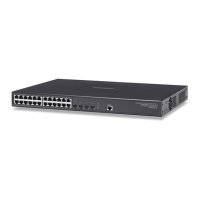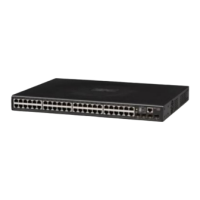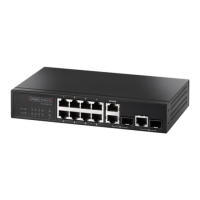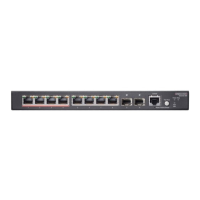C
HAPTER
4
| Configuring the Switch
Simple Network Management Protocol
– 131 –
N
OTE
:
The predefined default groups and view can be deleted from the
system. You can then define customized groups and views for the SNMP
clients that require access.
CONFIGURING SNMP
S
YSTEM AND TRAP
SETTINGS
To manage the switch through SNMP, you must first enable the protocol
and configure the basic access parameters. To issue trap messages, the
trap function must also be enabled and the destination host specified.
PARAMETERS
The following parameters are displayed on the SNMP System Configuration
page:
SNMP System Configuration
◆ Mode - Enables or disables SNMP service. (Default: Disabled)
◆ Version - Specifies the SNMP version to use. (Options: SNMP v1,
SNMP v2c, SNMP v3; Default: SNMP v2c)
◆ Read Community - The community used for read-only access to the
SNMP agent. (Range: 0-255 characters, ASCII characters 33-126 only;
Default: public)
This parameter only applies to SNMPv1 and SNMPv2c. SNMPv3 uses the
User-based Security Model (USM) for authentication and privacy. This
Table 12: SNMP Security Models and Levels
Model Level Community
String
Group Read View Write View Security
v1 noAuth
NoPriv
public default_ro_group default_view none Community string only
v1 noAuth
NoPriv
private default_rw_grou
p
default_view default_view Community string only
v1 noAuth
NoPriv
user defined user defined user defined user defined Community string only
v2c noAuth
NoPriv
public default_ro_group default_view none Community string only
v2c noAuth
NoPriv
private default_rw_grou
p
default_view default_view Community string only
v2c noAuth
NoPriv
user defined user defined user defined user defined Community string only
v3 noAuth
NoPriv
user defined default_rw_grou
p
default_view default_view A user name match only
v3 Auth
NoPriv
user defined user defined user defined user defined Provides user authentication
via MD5 or SHA algorithms
v3 Auth
Priv
user defined user defined user defined user defined Provides user authentication
via MD5 or SHA algorithms
and data privacy using DES
56-bit encryption
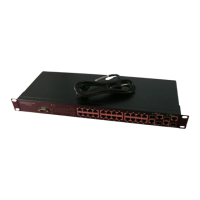
